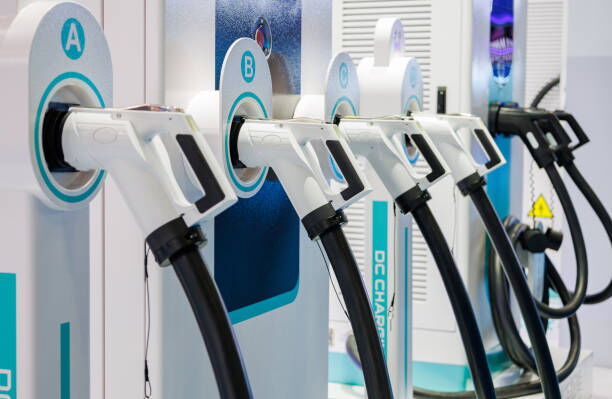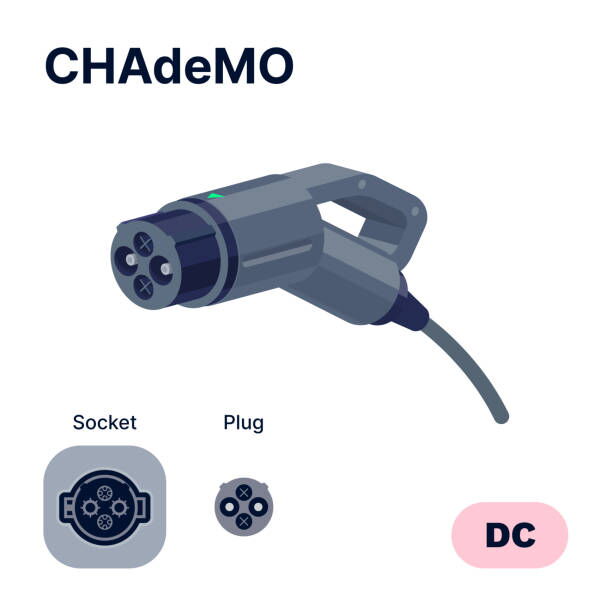As electric vehicles (EVs) become increasingly mainstream, the demand for faster, more efficient charging solutions continues to grow. Among the available options, DC fast charging—also known as Level 3 charging—stands out as the most powerful and time-saving method. Designed for drivers on the go, these high-powered chargers offer a dramatic reduction in charging time, making them essential for long-distance travel and high-utilization fleets.
This article explores the mechanics, benefits, compatibility concerns, and cost considerations of DC fast charging, helping EV owners and industry professionals better understand this critical infrastructure in the transition to electric mobility.
DC fast chargers are the fastest category of EV charging stations, capable of delivering a full charge in as little as an hour—sometimes even less. While Level 1 and Level 2 chargers supply alternating current (AC) to the vehicle, which then must be converted to direct current (DC) by the car’s onboard charger, DC fast chargers skip the conversion step. They convert AC power from the grid into DC at the station itself and deliver it directly to the vehicle’s battery. This direct supply of DC power allows for significantly higher charging speeds.
In practical terms, a Level 1 charger may take 20+ hours to fully charge a battery, and a Level 2 charger typically requires 4 to 8 hours. In contrast, a DC fast charger can recharge up to 80% of an EV’s battery in just 20 to 30 minutes—a game-changer for road trips, commercial fleets, or anyone with a packed schedule.

One key consideration when using DC fast charging is connector compatibility. Unlike AC charging, where the plug standard is largely universal, DC fast charging requires specific connectors, and these can vary by region and vehicle type.
The most widely adopted standard in Europe and North America, CCS enables both AC and DC charging through the same inlet. Known as CCS1 in North America and CCS2 in Europe, this connector is rapidly becoming the default across many regions due to its versatility and high power handling capacity.
This Japanese standard was once common but is now gradually being phased out, especially in Western markets. It requires a separate port for DC charging and is generally limited to 50 kW output, which significantly reduces its competitiveness against CCS.
Despite still being in use—especially among older Nissan Leafs and some Mitsubishi models—CHAdeMO’s presence is dwindling. As of recent policy shifts, CCS2 has been designated the new standard in Europe, further accelerating the phase-out of CHAdeMO infrastructure.

Tesla’s proprietary Supercharger network uses a unique connector in North America but supports CCS in Europe. Tesla has begun opening its network to non-Tesla vehicles in many markets, provided they are compatible with the required connector or equipped with an adapter.
In summary, while most EVs support DC fast charging, the exact connector and charging speed depend on the vehicle model. CCS is the clear front-runner in Europe and North America, with CHAdeMO slowly falling out of favor.

Even if your EV supports DC fast charging, its charging speed is limited by its battery architecture and onboard systems. Some modern EVs—such as the Hyundai IONIQ 5 or Porsche Taycan—support ultra-fast charging up to 350 kW. Others, especially compact or older models, may top out at 50 or 100 kW.
Here are a few key points to understand:
Maximum Charging Rate: This is the peak power (in kW) your vehicle can accept from a DC fast charger.
Battery State of Charge (SOC): Charging slows down as the battery approaches full capacity. For this reason, many DC fast chargers advertise charging from 20% to 80% rather than 0% to 100%.
Thermal Management: Charging at high speeds generates heat. Vehicles with superior thermal management systems can maintain higher speeds for longer durations.
Important Note: Some small EVs, like the Fiat 500e, do not support DC fast charging at all. Always verify your vehicle’s charging capability before heading to a fast charging station.
One of the most common questions among EV drivers is: Is DC fast charging more expensive than AC charging? The answer is almost always yes—but for good reason.
DC fast charging stations typically cost more to build, maintain, and operate. They draw more power from the grid, often require special permitting and equipment, and offer the unparalleled advantage of speed. As a result, operators charge a premium for the convenience.
Charging stations may bill users in one of several ways:
Per minute: You pay for the time your vehicle is connected, regardless of how much energy it’s receiving.
Per kilowatt-hour (kWh): You’re billed for the actual amount of energy delivered to your battery.
Session fee or idle fees: Some networks also charge flat fees per session or penalties for leaving your car plugged in after charging is complete.
Let’s say your EV can only handle a maximum of 50 kW, but you're plugged into a 250 kW ultra-fast charger that bills by the minute. In this case, you’ll be paying premium rates while receiving relatively modest charging speeds. Matching your vehicle's charging capability to the right charger is essential to avoid unnecessary costs.
So while DC fast charging is more expensive, the cost might be justified during long-distance travel, urgent errands, or fleet operations where time is money. For routine overnight charging, however, Level 2 AC charging is generally the smarter economic choice.
DC fast charging is not necessarily intended for daily use. Here are scenarios where it offers the most value:
Need to cover hundreds of kilometers in one day? DC fast charging ensures minimal downtime between legs of your journey.
Commercial EVs that operate on tight schedules benefit from faster turnarounds, increasing productivity and reducing downtime.
If you're running low on battery and need a quick boost to get to your destination or the next charger, DC fast chargers are a lifeline.
In cities where home charging isn’t available, public DC fast chargers offer a viable alternative—though frequent use may degrade battery health faster over time.
As battery technology advances and EV adoption grows, DC fast charging is evolving too. Emerging developments include:
Higher Power Outputs: Chargers delivering 400–500 kW are being developed to support the next generation of EVs with ultra-fast charging capabilities.
Battery Buffer Systems: To reduce grid strain, some charging stations are adding on-site battery storage to manage peak loads more efficiently.
Vehicle-to-Grid (V2G) Integration: In the future, DC fast charging stations could become two-way power hubs, allowing EVs to send energy back to the grid during high-demand periods.
Wider Network Coverage: Governments and private firms are expanding fast-charging networks, especially along major highways and in underserved rural areas.
DC fast charging is revolutionizing how we think about refueling electric vehicles. It's fast, powerful, and becoming more widely available by the day. However, it’s not a one-size-fits-all solution.
Before plugging into a DC fast charger, consider the following:
Does your EV support DC fast charging?
What is your vehicle’s maximum DC charging rate?
Is the connector at the station compatible with your car?
Are you being billed fairly based on your car’s capabilities?
In short, DC fast charging is best used strategically—as a supplement to regular Level 2 charging. It’s an ideal solution for quick top-ups on the road, not necessarily for your daily charging routine.
As the EV ecosystem matures, understanding the role and optimal use of DC fast chargers will help drivers save time, money, and energy—literally.
